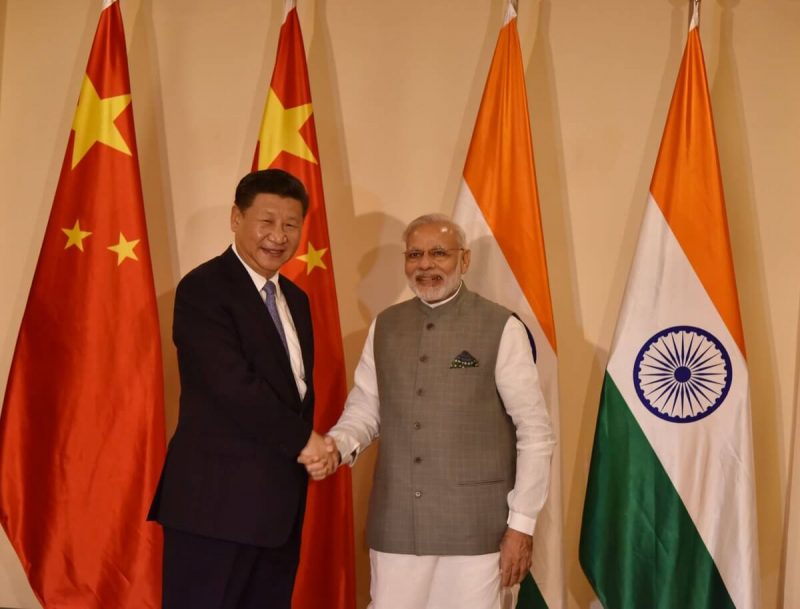Indian PM Narendra Modi and Chinese President Xi Jinping will be meeting for the first time on Tuesday since the beginning of the intense border stand-off in May.
The two leaders are participating virtually in the Shanghai Cooperation Organisation (SCO) summit. They will see each other again on 17 November for the BRICS meet and on 21-22 November for the G-20 summit.
The summit is being hosted by Russia as the chair of the grouping for this year. PM Modi will also be meeting his Pakistan counterpart Imran Khan as part of the meet. Leaders from the other four Central Asian countries Kazakhstan, Kyrgyzstan, Tajikistan, and Uzbekistan will also participate.
India’s ministry of external affairs spokesperson Anurag Shrivastava said – “PM will lead the Indian delegation to the 20th summit of SCO Council of heads of state which will be held in the virtual format on 10th of November. The meeting will be chaired by President Putin of the Russian Federation”.
Unlike the last SCO summit in Moscow where External Affairs Minister S Jaishankar met the Chinese counterpart to discuss the disengagement along the Line of Actual Control, Modi and Xi are unlikely to take up the matter during the virtual meet.
Indian defense minister Rajnath Singh and NSA Ajit Doval had also undertaken a face-to-face meet with the Chinese counterpart for negotiation on border stand-off during the Moscow visits in September.

Officials told The Indian Express that chances of a border thaw at the SCO meeting are “bleak”, given the hard positions the two sides have taken. The virtual summits do not provide the opportunity for the leaders to meet on the sidelines of the summit and engage in discussions.
India and China have undertaken eight rounds of military talks and six rounds of diplomatic talks but so far there hasn’t been any breakthrough. The recent talks held last week on Friday had Beijing proposing a step forward from what it had stuck to in the previous meetings.
Without divulging into the details, a senior army officer has said that while India has stood for complete disengagement, China has given “a proposal that has gone beyond what they were stuck at”, and which is “under consideration [by India]. The next round of talks will take place soon.
With the onset of winter in the Himalayas, both the Indian Army and People’s Liberation Army have indulged in providing logistic support to their troops so they can survive the cold and are combat-ready at the same time.
There have been several face-offs between the troops from both sides but the violent face-off of 15 June had killed 20 Indian soldiers and an unconfirmed number on the Chinese side in the Galwan Valley.
While Chinese PLA troops have transgressed into Indian territory and occupied positions in Finger 2 and 3 of the north bank of Pangong Tso (lake), Indian troops in late August captured the strategically-important heights of Rechin La, also known as the Reqin Pass in the western sector of the China-India border, overlooking a crucial Chinese camp at Moldo.
Since April, India has not been able to patrol beyond Finger 4 in Pangong Tso. Other areas of military build-up are the Depsang plains, Galwan, Gogra-Hot Springs, and the south bank of Pangong Tso in Chushul. The current stand-off is the outcome of the different understandings of the Line of Actual Control by the two countries.
Chinese state-run media house the Global Times in its editorial says – If India can put aside its political differences with some member states and promote economic exchanges within the multilateral framework, there will still be considerable room for economic cooperation between India and other SCO member states.




